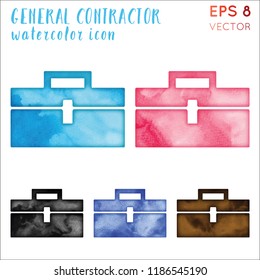An Examination Of Inside Versus Exterior Paint: Basic Differences And Their Applications
An Examination Of Inside Versus Exterior Paint: Basic Differences And Their Applications
Blog Article
Content Author-Reimer Henry
When you're picking between exterior and interior paint, it's important to recognize their essential distinctions that affect both performance and appearances. Inside painting contractors are crafted for lower VOC degrees and smoother surfaces, making them perfect for indoor spaces, while exterior paints are designed to endure severe climate condition and UV direct exposure. Each type offers a distinctive objective, yet understanding when to utilize one over the other can substantially affect your project's result. So, what aspects should you take into consideration when making your selection?
Structure and Formula
When choosing in between interior and exterior paint, understanding their make-up and formula is essential. Inside paints commonly consist of a lower amount of volatile organic substances (VOCs), making them much safer for interior air high quality. You'll see they commonly have a smoother finish, which improves their capability to resist discolorations and allows for simpler cleaning. They're designed to stand up to the roughness of indoor settings, including differing humidity degrees and temperature level changes.
On the other hand, outside paints are developed to withstand harsher conditions. They generally have higher degrees of pigments and ingredients to stand up to fading from UV rays, in addition to to avoid mildew and mold and mildew growth. Their structure consists of much more binders and materials, which give far better bond to surface areas revealed to the components. This makes sure the paint can hold up against rainfall, snow, and fluctuating temperatures without peeling or splitting.
Performance and Toughness
Assessing efficiency and toughness is vital when choosing in between interior and exterior paint. Inside paint is created for surface areas that experience less damage. It generally stands up to fading and scuffing, making it excellent for living spaces and bedrooms. However, house painters edmonton might not hold up well in high-moisture areas like bathroom and kitchens without proper solution.
On the other hand, outside paint faces harsher problems. It's crafted to hold up against UV rays, rainfall, and temperature changes. This sort of paint frequently includes ingredients that protect against mold and mildew and mildew development, making certain longevity in numerous climates. When you make use of external paint, you can anticipate it to last a number of years much longer than indoor paint, gave it's used correctly.
An additional essential difference depends on the finish options. Inside paints often have a range of finishes for visual appeal, while exterior paints focus on toughness over luster. If you're looking for something that can take care of the components, outside paint is your best bet.
In contrast, if you're focused on interior aesthetics with less concern for extreme conditions, interior paint may be appropriate. Ultimately, your selection ought to straighten with the details demands of the environment.
Aesthetic Factors to consider
A fresh coat of paint can transform a room, however visual considerations play an important duty in your choice between exterior and interior options. When you're choosing paint, think of the mood you want to develop. Inside paint enables you to check out a larger variety of shades and surfaces, allowing you to share your personal design and improve your home's atmosphere. Whether you select soft pastels or bold tones, the appropriate indoor paint can make your areas feel relaxing, vivid, or tranquil.
On the other hand, outside paint needs to align with your home's architecture and the surrounding environment. Right here, you're not just making a style statement; you're likewise taking into consideration curb charm. Choosing colors that harmonize with your community can enhance your home's worth and visual charm. Bear in mind that outside paint is likewise subject to fading and weather modifications, so selecting a classic color can conserve you from frequent repainting.
Ultimately, think about how each alternative fits your vision. By straightening your paint selection with your desired aesthetic, you can produce areas that show your personality while preserving functionality.
Conclusion
When it involves picking paint, understanding the essential differences between interior and exterior alternatives is vital. Interior paints focus on appearances and reduced VOCs, making them best for improving your indoor spaces. In contrast, outside paints are designed for longevity and weather resistance, shielding your home from the components. By considering your details requirements and the environment, you can confidently select the ideal paint to attain the appearance and longevity you want for your room.
